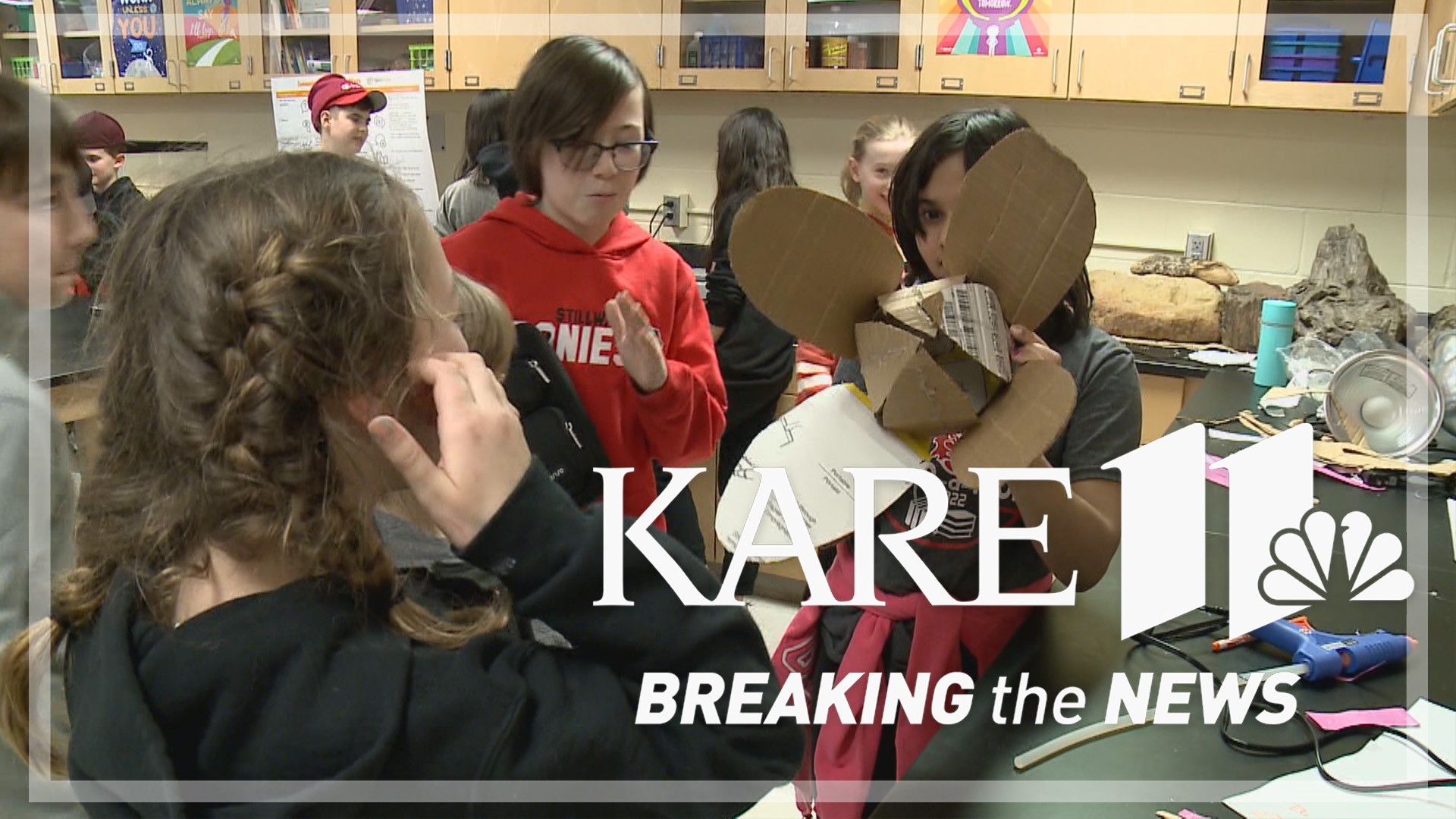STILLWATER, Minn. — APRIL 2024 UPDATE:
The light pollution project created by a Stillwater middle school class was named a top-10 national finalist for Samsung's Solve for Tomorrow competition!
Their project initially involved a light designed like a Lady Slipper, but now that they're going on to the finals, they're trying to incorporate some new tricks to pitch while in Washington, D.C.
"We actually are now trying out a petunia that has been modified to 'glow in the dark' courtesy of some bioluminescent mushroom genetics!"
To learn more about their project, and to help them bring home $10,000 worth of Samsung products and classroom materials, click here to cast your vote.
ORIGINAL STORY:
City officials are hearing out what some sixth graders have to say about light pollution in town, especially now that their classroom is advancing in a national STEM competition.
Samsung's 14th annual Solve for Tomorrow contest tasks students nationwide with finding STEM solutions for real problems in their neighborhoods.
At Stillwater Middle School, science teacher Corrie Christensen came across the contest and asked her sixth graders to come up with solutions for light pollution as they'd recently studied the topic.
"The light pollution affects bird migration and the St. Croix River which is in our community is a pathway, a flyway, for like 250 species of birds," Christensen said. "The kids just went to town and came up with a lot of ideas."
So far, the students have designed and produced a few different prototypes of a street light cover shaped like a lady's slipper, a nod to Minnesota's state flower, using 3D printers, cardboard and string. Eventually they plan to construct a cover large enough to cover a street lamp and place bioluminescence light inside.
"Bioluminescence is an organism that has its own like natural glow," Christensen said. "Some of the students have more information about that. Like, they are the experts on the bioluminescence!"
Bioluminescence light levels don't affect birds as harshly, they explained.
"The birds use the stars for their migration path, so if they cant see the stars, they're not on their correct migration paths," student Kristina Wahlman said. "That's one of the big risks with light pollution getting worse."
Samsung recently announced that 50 schools – one from each state – are advancing to the final rounds of the contest, receiving a $12,000 technology prize package for their schools. For Minnesota, Stillwater Middle School won.
"I feel really good about this because I like being Minnesotan, especially in this historic town," student Arthur Lee said. "I'm just really proud of Stillwater."
"They deserve it because they've been so dedicated to this," Christensen added. "I have kids working on it on the weekends, writing to me, asking me questions, researching."
In early March, each state winner will receive a Samsung video production kit to document their project and create a 3-minute video showcasing their STEM solution for the community issue. Ten national finalists will be selected in late-March and each awarded a $50,000 prize package.
Not only do the Stillwater students have a shot at winning, but their lights could be installed in town. They recently invited Mayor Ted Kozlowski and city engineer Shawn Sanders to visit the classroom.
"The city already had plans to replace lights in three years, so they are already thinking about funding it, which means if we have a solution for them and they like it, they already have funds for it," one student said. "So it is actually possible. We're going to work with the mayor's engineer, head engineer, to figure out the dimensions for which we need to design this."
Students also invited Joanna Eckles with the American Bird Conservancy to speak to the class.
"To learn how to 3D model, we talked with some 8th graders in the design and model class to teach us how to make 3D models," Lee said. "We went to their class and they came to us sometimes. Without them, we wouldn't know how to make these."
In April, Solve for Tomorrow will name three schools as national winners, each of whom will receive $100,000 in prize packages consisting of Samsung tech and classroom supplies.
Watch more Breaking The News:
Watch all of the latest stories from Breaking The News in our YouTube playlist:

